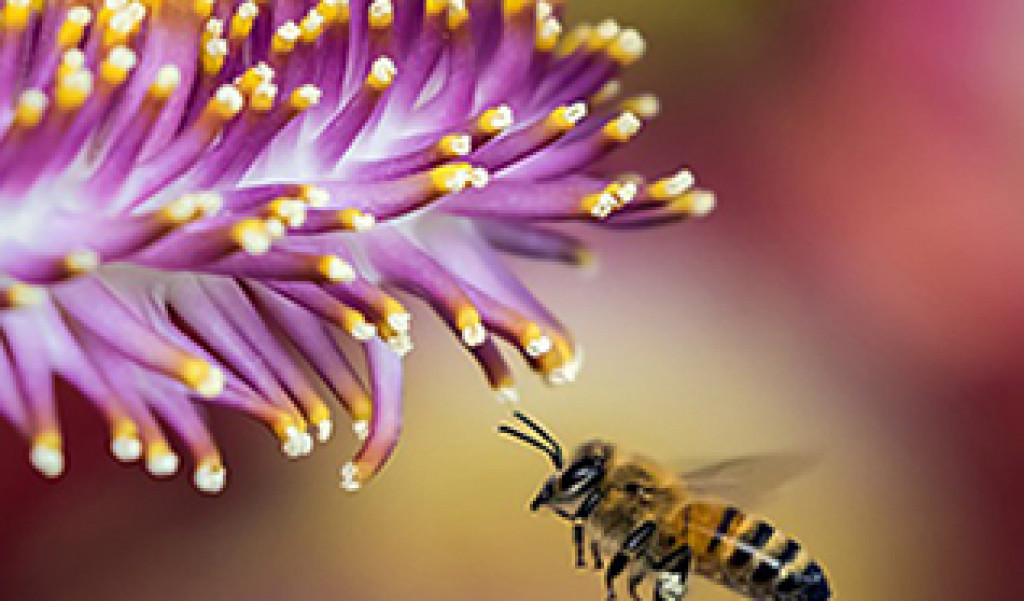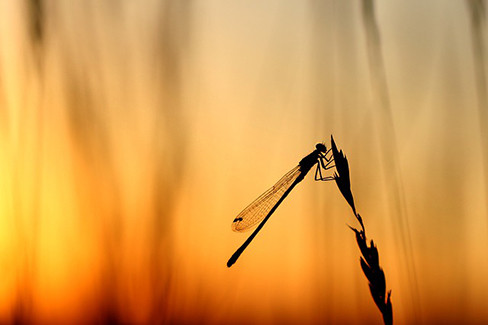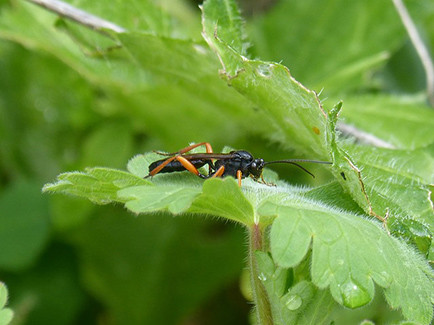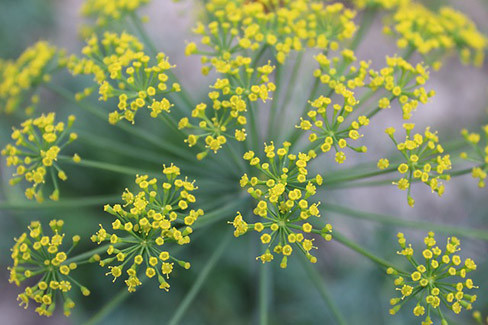Some insects bite, some may sting; many will annoy. Some are even considered destructive to homes, crops, and gardens. But the fact is, most insects have either no direct impact on our landscape and gardens, or they’re beneficial in some way.

Some insects bite, some may sting; many will annoy. Some are even considered destructive to homes, crops, and gardens. But the fact is, most insects have either no direct impact on our landscape and gardens, or they’re beneficial in some way.

Read on to find out which bugs are beneficial, what they do for us, and how to attract them.
Pollinators
Pollination is the transfer of pollen from one flowering plant to another, resulting in fertile seeds. Pollinator insects include beetles, bees, ants, wasps, butterflies, and moths.
Bees - Bees pollinate the largest number of plant species, including fruits, vegetables, and ornamental plants. In addition to pollination, the honeybee species also produces honey and beeswax. All hail the bee, queen mother of all pollinators.
Butterflies - Though butterflies may not be premiere pollinators, their continual fluttering from flower to flower more than makes up for the quantity of pollen they carry.

Predators
Predators are insects that hunt for their food, catching, killing, and eating a wide variety of other insects. Some types of predators, such as hover or syrphid flies, are predatory only as immatures or larvae, preying primarily on aphids, mealybugs, scale insects, and other soft-bodied insects.
Dragonflies - Adult dragonflies feed on insects such as mosquitoes, midges, flies, and winged ants.
Ladybugs - Larvae and adult ladybugs feed primarily on aphids, but they will also eat scales, caterpillar eggs, and mites. If left unchecked, aphids can stunt plant growth, deform and discolor leaves and fruit, or cause galls to form on leaves, stems, and roots.
Green Lacewings - Lacewing larvae, called “aphid lions,” are extremely carnivorous and prey on many soft-bodied insects and mites. They devour insect eggs, thrips, mealybugs, immature whiteflies, and small caterpillars. They can consume over 200 aphids or other prey in a single week.
Ground Beetles - One of the most striking ground beetles is the caterpillar hunter. This species is about an inch long and is a brilliant metallic green color. Both the larvae and adults eat other insects, while one group even feeds on snails.

Parasitoids
In nature, parasites usually only weaken or sicken their hosts; parasitoids, however, kill and consume their hosts.
Parasitic Wasps - During its developmental stages, the parasitic wasp’s larval stages develop either inside or outside of a host. Most insect groups (including aphids, beetles, caterpillars, flies, sawflies, scale insects, and true bugs) are attacked by parasitic wasps. Many parasitic wasps are host-specific, developing in one or a limited number of hosts.
Techinid Fly - As a whole, most techinid fly species parasitize caterpillars or beetles. However, some species develop in sawflies, true bugs, grasshoppers, or other insects. Stink bugs or various caterpillars can also be a good source for some tachinid fly parasites.
Decomposers/Recyclers
A decomposer’s job begins when the life of another organism ends. Decomposers break down the complicated compounds in dead organisms and convert them to simpler forms, usable to themselves and to others.
Ox Beetle or Elephant Beetle - These larvae live in rotten logs or highly organic matter. They are also found in compost heaps and occasionally infest potting soil. Living inside wood blocks and the like, their diet consists of rotten wood and composted vegetation. Thus, they serve a vital role in the recycling of organic matter.
Crane Fly - Crane flies look like Texas-sized mosquitoes and have been incorrectly called mosquito hawks. The larvae have chewing mouth parts and feed primarily on decomposing organic matter, thus assisting in the biological decomposition process. Crane fly adults only live for a couple of days and are harmless.

Keep your garden healthy by providing appropriate moisture, drainage, and air circulation. Including flowering plants will help ensure that these friends will remain long enough to lay their eggs on your vegetation. The most attractive plants to beneficial insects are those with small, clustered flowers. Families with these characteristics include: